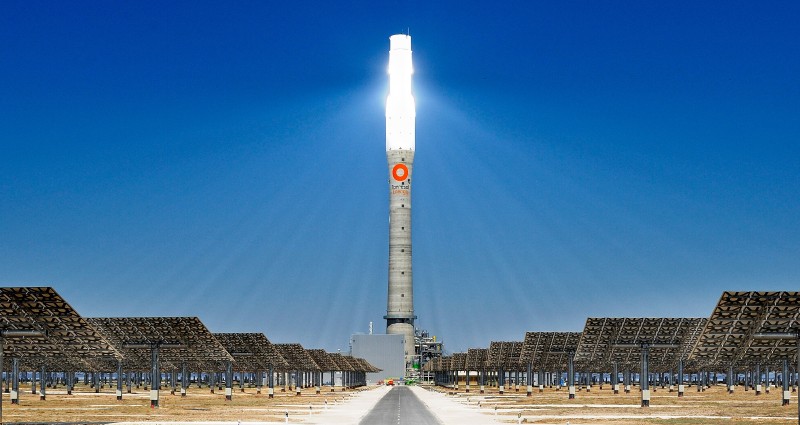Clean energy is one of the fastest growing industries in the world. Our analysts at Bank of America Merrill Lynch estimate the sector will grow by $13 trillion by 2030.
But work needs to be done. The International Energy Agency (IEA) estimates the world needs a cumulative $75 trillion in clean energy investments by 2040 if we are to meet our international climate goals set at COP21 in Paris.
As a global financial services company, Bank of America recognizes its responsibility to help finance the transition to a low-carbon economy.
As the global head of the firm’s Energy and Power Corporate and Investment Banking group, it is clear to me that clean energy is a key centerpiece to a more sustainable future and to our firm’s position at the centre of that future.
Weekly briefing: Sign up for your essential climate politics update
We see a clear market opportunity here, and investing in clean energy enables us to grow responsibly as well as leverage our expertise as a global financial institution – all to help bring the private sector together to create innovative climate solutions.
As part of our effort to be a leader in clean energy investment, we’ve committed to $125 billion in financing for low-carbon and sustainable business by 2025 to address climate change and other demands on natural resources for clients around the world.
In 2015 alone, we delivered $14.5 billion toward this goal and since 2007 we have provided more than $53 billion in low-carbon activities connected to clean energy, energy efficiency, and other sustainable projects.
That said, we also understand the challenges that exists in mobilizing additional capital toward clean energy around the globe.
It was with this in mind we launched the Catalytic Finance Initiative (CFI) in 2014, focused on creating at least $10 billion of new investment in high-impact clean energy projects.
This initiative helps to develop or advance innovative financing structures that reduce investment risk such as philanthropic first-loss capital funds, thereby attracting a broader range of institutional investors into projects as they derisk.
The CFI started with a $1 billion commitment from Bank of America as an effort to bring other financial institutions to the table, and has since grown to $8 billion with the recent addition of eight new partners earlier this year.
Report: Green business leaders bullish despite Brexit volatility
Alongside all of this, we continue to help companies finance their own renewable energy commitments through support for the market for green bonds, which are designed to increase investments in projects with environmental benefits.
Bonds for low-carbon and other sustainable business account for a small fraction of the global bond market, which is currently valued at $100 trillion.
We see enormous potential to grow the green bond market to help drive even more capital to renewable energy, sustainable transportation, infrastructure, and other low carbon sectors.
We will continue to help educate clients of this opportunity as well as provide key expertise in this area. For the past two years, Bloomberg New Energy Finance ranked Bank of America Merrill Lynch as the number one underwriter of green bonds.
These kinds of financial products make sense for business and the environment, and help pave the path for a clean energy future.
#BusinessClimate on #Brexit:
1️⃣🚫delay to #ParisAgreement
2️⃣🐌 investment in UK & EMs
3️⃣if UK ✅5th Carbon Budget, few changes to EU's NDC— Abyd Karmali OBE (@AbydKarmali1967) June 29, 2016
Looking ahead, as the private sector looks to be part of the solution on climate change, it is critical to identify where a company’s abilities and objectives overlap with the actions that the world needs.
For incumbent utilities, they can play a more integral role if unfettered by regulators and other stakeholders by giving them the space and revenue opportunity to step up and fund the next generation of new projects the world needs.
Likewise, my sense also is that the oil majors are also ready to embrace the project at hand and be part of the energy transition – bridging that transition with their investments in gas, in carbon capture, in new energies and indeed in new partnerships.
Meantime for us at Bank of America, financing the transition to a low-carbon economy is a core part of our business model and centered on our mission of responsible growth.
Other companies may have different pathways forward – but for the private sector as a whole we share a common cause. That is to use the resources of the business community to help meet the promise of Paris, as we work to build a more sustainable low carbon future.
Whether it is a newer or more established business, it is equally critical for the world to transition to a lower carbon economy and to secure the goals we all share for the next generation. We look forward to being at the forefront of that investment effort.
This post is part of a thought leader series from the 2016 Business & Climate Summit, held last month in London. Julian Mylchreest is Head of Global Energy & Power Investment Banking at Bank of America Merrill Lynch, and a key speaker during the Summit. For more information or to watch the sessions again, visit the summit website.
